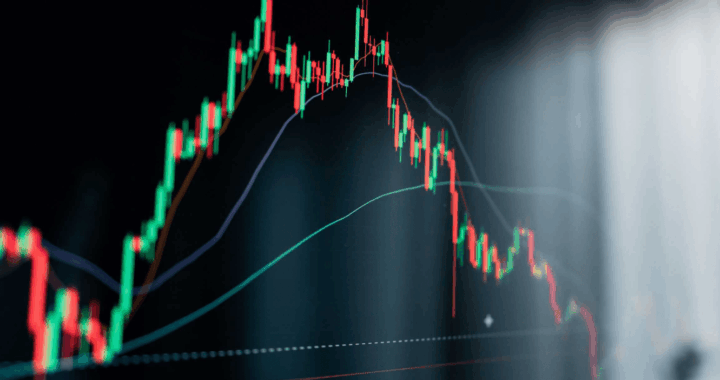Leveraged and Inverse ETFs: Strategies for Volatile Markets

Investing during a volatile market can be a daunting task. With stocks and other asset classes experiencing high fluctuation levels, many investors seek ways to hedge against potential losses.
One strategy that has become increasingly popular amongst investors is leveraged and inverse exchange-traded funds (ETFs). Leveraged and inverse ETFs allow traders the ability to execute more complex strategies while also taking advantage of higher volatility in the markets. In this article, we will discuss all aspects of these investment vehicles and provide insights into how leveraging or inverting positions may help you reach your investment goals.
Understanding Leveraged and Inverse ETFs
Exchange-traded funds (ETFs) have revolutionised how investors approach the stock market. These financial instruments allow investors to diversify their portfolio with a single investment, provide low fees, and offer a level of transparency. Leveraged and inverse ETFs are a subtype of ETFs that use borrowed money to enhance their returns or to provide the opposite return of a benchmark or index, respectively.
These types of ETFs come with increased risks and should be cautiously approached. It is essential for investors to understand the mechanics behind leveraged and inverse ETFs before allocating funds to them. Educating oneself on the potential pitfalls and benefits of these ETFs is a crucial step towards responsible investing.
Advantages and Disadvantages of Leveraged and Inverse ETFs
Leveraged and inverse ETFs are popular among traders and investors who aim to amplify their returns or hedge their portfolios. These investment vehicles use derivative instruments to magnify the performance of an underlying asset or inverse its movement. However, leveraged and inverse ETFs entail higher risks and costs than traditional ETFs.
One of their advantages is that they allow investors to gain exposure to the market or a specific sector with a smaller capital than buying the underlying assets directly. Moreover, they offer flexibility in trading and enable investors to take advantage of short-term opportunities. On the other hand, leveraged and inverse ETFs require careful monitoring and rebalancing, as their performance may deviate significantly from the underlying asset over time.
They also have higher expenses, such as management fees, trading costs, and tracking errors, which can erode their returns over the long term. Therefore, investors should understand the advantages and disadvantages of leveraged and inverse ETFs and assess whether they fit their investment goals and risk tolerance.
Strategies for Using Leveraged and Inverse ETFs
During volatile market conditions, leveraged and inverse ETFs are valuable tools for traders to take advantage of. These investment vehicles allow investors to take advantage of the rise or fall of a market or sector with magnified returns. However, as mentioned earlier, they entail increased risks and require careful monitoring to avoid significant losses.
One strategy for using these ETFs is to hedge against potential losses in a portfolio. For example, suppose an investor holds many stocks in the energy sector. In that case, they can mitigate potential losses by buying a leveraged inverse ETF that tracks the performance of the energy sector. In this way, if the market experiences a downturn, the gains from the leveraged inverse ETF can offset the losses in their stock holdings.
Another strategy is to use these ETFs as a short-term trading tool. In volatile markets, prices can quickly swing in either direction. By taking advantage of leveraged and inverse ETFs’ ability to magnify gains or losses, investors can capitalise on short-term price movements.
Risks Associated with Leveraged and Inverse ETFs
While leveraged and inverse ETFs offer investors the potential for higher returns, they also come with increased risks. These types of ETFs use derivatives to amplify their returns, which increases their exposure to market volatility.
Moreover, the performance of leveraged and inverse ETFs can deviate significantly from the underlying asset over time. It is known as compounding risk, where the performance of the ETF is not a simple multiple of the underlying asset’s performance. It can lead to significant losses if investors are not carefully monitoring and rebalancing their positions.
Additionally, leveraged and inverse ETFs often have higher expenses compared to traditional ETFs, which can erode their returns over time. These expenses include management fees, trading costs, and tracking errors. Investors should carefully consider these risks before investing in leveraged and inverse ETFs.
The Role of Tax Considerations in Investing with Leveraged and Inverse ETFs
Tax considerations are also essential to keep in mind when investing in leveraged and inverse ETFs. These types of investments can generate higher capital gains or losses than traditional ETFs due to their amplified returns. As a result, investors may face higher tax liabilities.
Investors should consult a tax professional to understand the potential tax implications of investing in these ETFs. Depending on their investment goals and tax situation, it may be more beneficial to allocate funds to traditional ETFs instead of leveraged and inverse ETFs.
 Are Forex Prop Firms Worth It for New Traders? Real Benefits and Key Considerations for 2025
Are Forex Prop Firms Worth It for New Traders? Real Benefits and Key Considerations for 2025  How to Prepare Your CPA Firm for a Successful Exit: A Step-by-Step Guide
How to Prepare Your CPA Firm for a Successful Exit: A Step-by-Step Guide  How Fixed and Variable Costs Impact Your Stock Trading
How Fixed and Variable Costs Impact Your Stock Trading  Leveraged and Inverse ETFs: Strategies for Volatile Markets
Leveraged and Inverse ETFs: Strategies for Volatile Markets